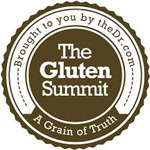|
|
|
Micki Rose pulls it all together |
|
So, here we are at the business end of the Gluten Summit series. Time to summarise what we have learned about gluten related disorders (GRDs). This piece could be extremely long so do please read the whole series to get a full understanding of the subject. For our summary, I have picked out the bits I think should help us most in our day to day gluten lives. For ease, I have split it into four key sections for you: Overview, Causes, Diagnostics and Treatment. Overview There is a spectrum of GRDs, not just coeliac disease (CD), as was once thought. CD is important, of course, but there are likely double the number of NCGS sufferers than CDs and we have to acknowledge that. Causes The jury is basically still out, but there has been a flood of research over the past few years and more information seems to appear daily. If we accept the pathology triad premise above, the question is what triggers the genes and promotes hyper-permeability? Here is a list of possibles mentioned for you: Diagnostics This is still a hotbed of controversy with the new thinkers snapping at the heels of the old guard. The biggest message to come out of the summit was that coeliac diagnosis is too hit and miss, subject to misinterpretation, focuses on latter stages only and cannot be relied upon for ruling in or out a GRD, especially the more prevalent NCGS. The stance seems to be to confirm CD if you can, but test some of the parameters below and trial a GFD especially in suspect, idiopathic cases.
Treatment Ok, the nitty-gritty stuff. GRDs appear to have multi-factorial causes, as we have seen, so will need a multi-factorial treatment approach to match. In essence, the approach should be aimed at repair of the body barrier permeability and switching the appropriate genes back off.
So, just a bit to go at there then!
To read the introduction to the Gluten Summit, see here. Catch up with the mini-series 1, 2, 3, 4 and 5. For practical help, I have put a ton of info onto the TrulyGlutenFree website for you, and there is a hand-holding step-by-step testing and treatment process, covering all of the above factors, in the Gluten Plan you to follow, too. Everything is split into three key sections: Finding Your Type of GRD, Determining Your Diet and Establishing Your Healing Protocol. It’s a kind of pick & mix approach for you to build your own programme depending on where you are in the spectrum and process.
|
If you found this article interesting, you will find many more general articles and research reports on coeliac disease here, and lots of information on the management of coeliac disease here.
You can also find articles and research reports on gluten intolerance here and articles on a wide range of other digestive conditions here.
For hundreds of gluten free foods see our freefrom food section here, and for nearly 800 gluten-free recipes see here.
And if you would like to get our FREE fortnightly e-newsletter with new products, recipes, articles and all the latest news from the allergy and freefrom world, just sign up here.









